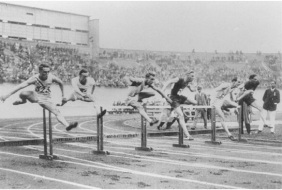 One of my favorite record sets for creating a framework for any given family is the census. Census records can be an invaluable wealth of information putting ancestors in a time and a place every ten years (every five if you are lucky enough to have them in a state that held a state census every five). In the censuses from 1790-1840, only the names of the heads of households were recorded (and using those censuses can be a whole different animal). However, in 1850 we begin to get more information with every census. Heads of household, relationship to that head, birthplaces, birth month and year, occupations, whether naturalized, military service, and so on.
One of my favorite record sets for creating a framework for any given family is the census. Census records can be an invaluable wealth of information putting ancestors in a time and a place every ten years (every five if you are lucky enough to have them in a state that held a state census every five). In the censuses from 1790-1840, only the names of the heads of households were recorded (and using those censuses can be a whole different animal). However, in 1850 we begin to get more information with every census. Heads of household, relationship to that head, birthplaces, birth month and year, occupations, whether naturalized, military service, and so on.
When I begin researching a new family line, I invariably begin with the census. Finding their names in the correct time and place gives the researcher a solid foundation to begin from. The census is like the solid footing from which all other steps are based: find the family in the census, mark them on a map and begin searching for other records in the town, county, state and trace migrations when they occur.
There are many reasons why you may be having difficulty finding your ancestors in the census. This series of blog posts will share some of my favorite “hurdles” for finding those ancestors. I will cover things such as language barriers, literacy issues, indexing errors, information quality, microfilming errors, and I will end with some of my favorite searching tips and tricks.

Keep up the good work on the posts! How did your talk in Cheyenne go?